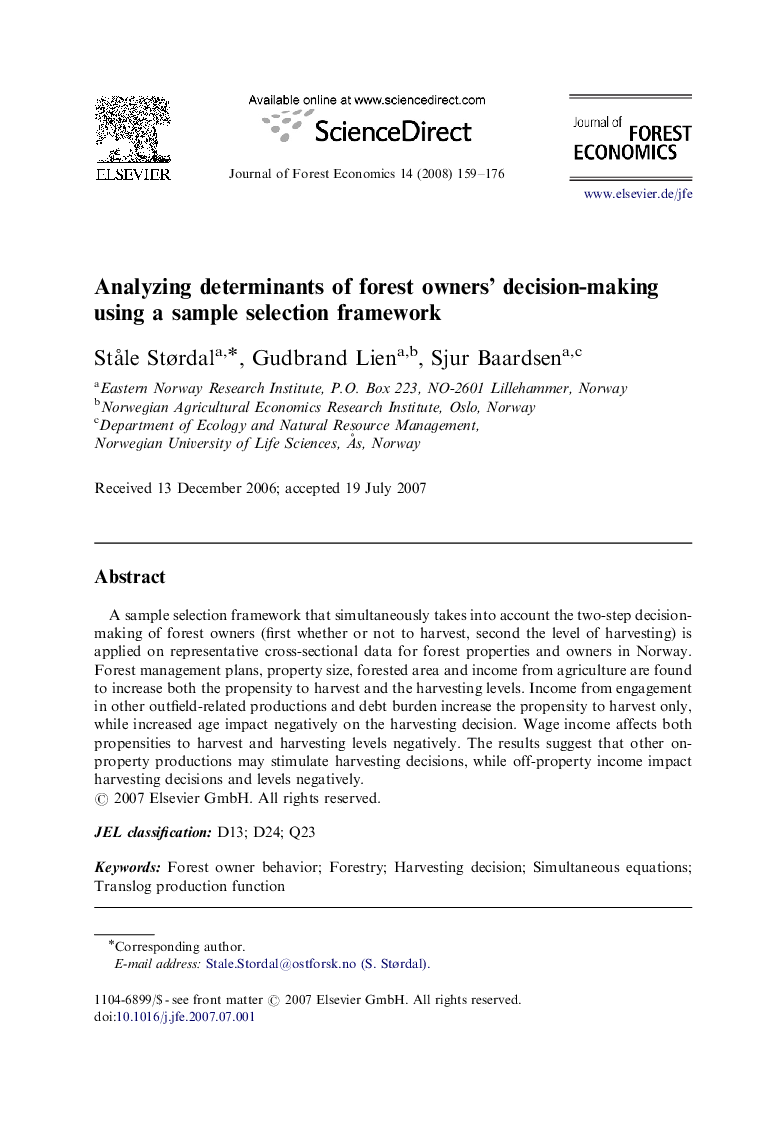| Article ID | Journal | Published Year | Pages | File Type |
|---|---|---|---|---|
| 92134 | Journal of Forest Economics | 2008 | 18 Pages |
A sample selection framework that simultaneously takes into account the two-step decision-making of forest owners (first whether or not to harvest, second the level of harvesting) is applied on representative cross-sectional data for forest properties and owners in Norway. Forest management plans, property size, forested area and income from agriculture are found to increase both the propensity to harvest and the harvesting levels. Income from engagement in other outfield-related productions and debt burden increase the propensity to harvest only, while increased age impact negatively on the harvesting decision. Wage income affects both propensities to harvest and harvesting levels negatively. The results suggest that other on-property productions may stimulate harvesting decisions, while off-property income impact harvesting decisions and levels negatively.
